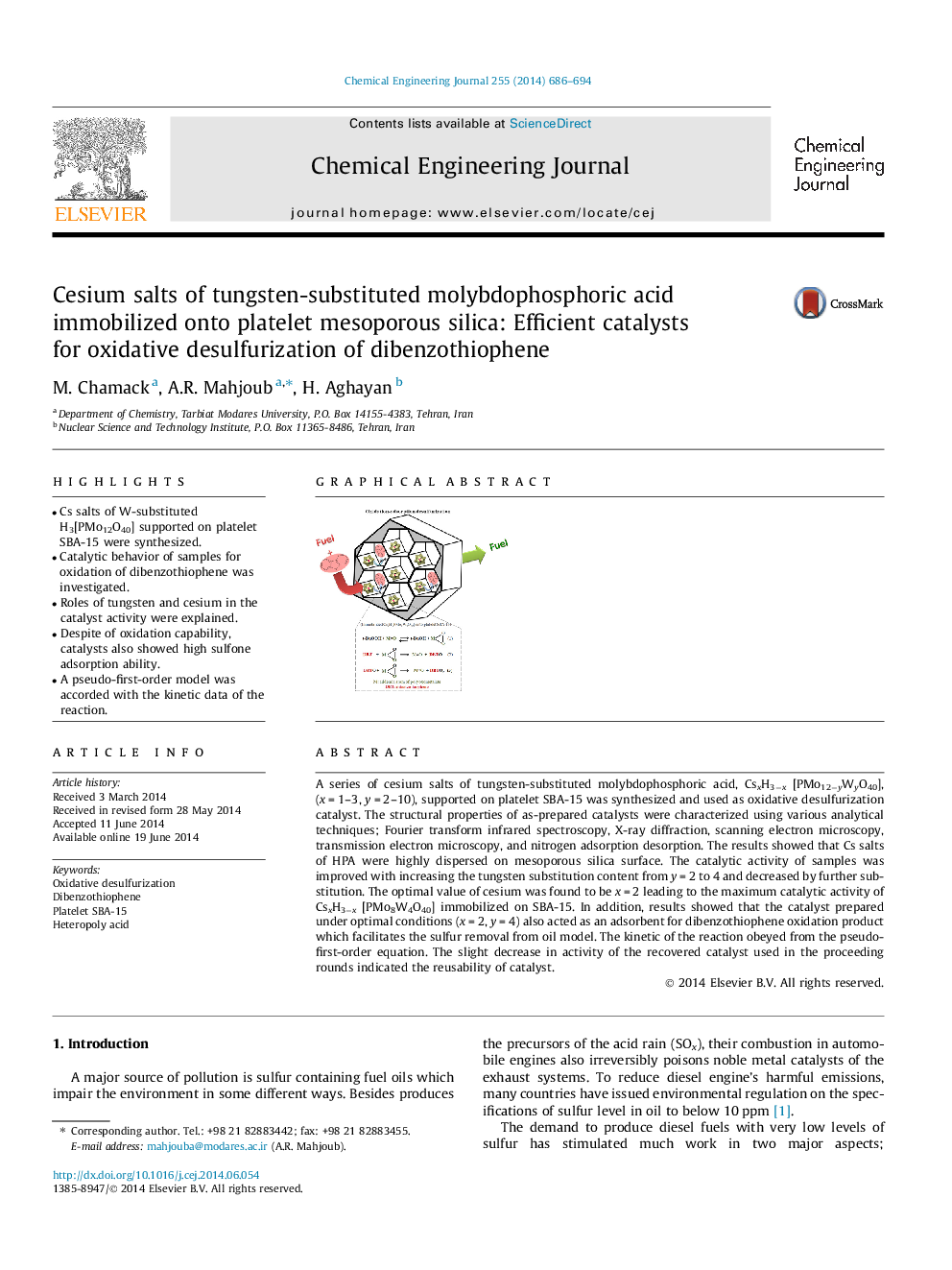| Article ID | Journal | Published Year | Pages | File Type |
|---|---|---|---|---|
| 147090 | Chemical Engineering Journal | 2014 | 9 Pages |
•Cs salts of W-substituted H3[PMo12O40] supported on platelet SBA-15 were synthesized.•Catalytic behavior of samples for oxidation of dibenzothiophene was investigated.•Roles of tungsten and cesium in the catalyst activity were explained.•Despite of oxidation capability, catalysts also showed high sulfone adsorption ability.•A pseudo-first-order model was accorded with the kinetic data of the reaction.
A series of cesium salts of tungsten-substituted molybdophosphoric acid, CsxH3−x [PMo12−yWyO40], (x = 1–3, y = 2–10), supported on platelet SBA-15 was synthesized and used as oxidative desulfurization catalyst. The structural properties of as-prepared catalysts were characterized using various analytical techniques; Fourier transform infrared spectroscopy, X-ray diffraction, scanning electron microscopy, transmission electron microscopy, and nitrogen adsorption desorption. The results showed that Cs salts of HPA were highly dispersed on mesoporous silica surface. The catalytic activity of samples was improved with increasing the tungsten substitution content from y = 2 to 4 and decreased by further substitution. The optimal value of cesium was found to be x = 2 leading to the maximum catalytic activity of CsxH3−x [PMo8W4O40] immobilized on SBA-15. In addition, results showed that the catalyst prepared under optimal conditions (x = 2, y = 4) also acted as an adsorbent for dibenzothiophene oxidation product which facilitates the sulfur removal from oil model. The kinetic of the reaction obeyed from the pseudo-first-order equation. The slight decrease in activity of the recovered catalyst used in the proceeding rounds indicated the reusability of catalyst.
Graphical abstractFigure optionsDownload full-size imageDownload as PowerPoint slide
